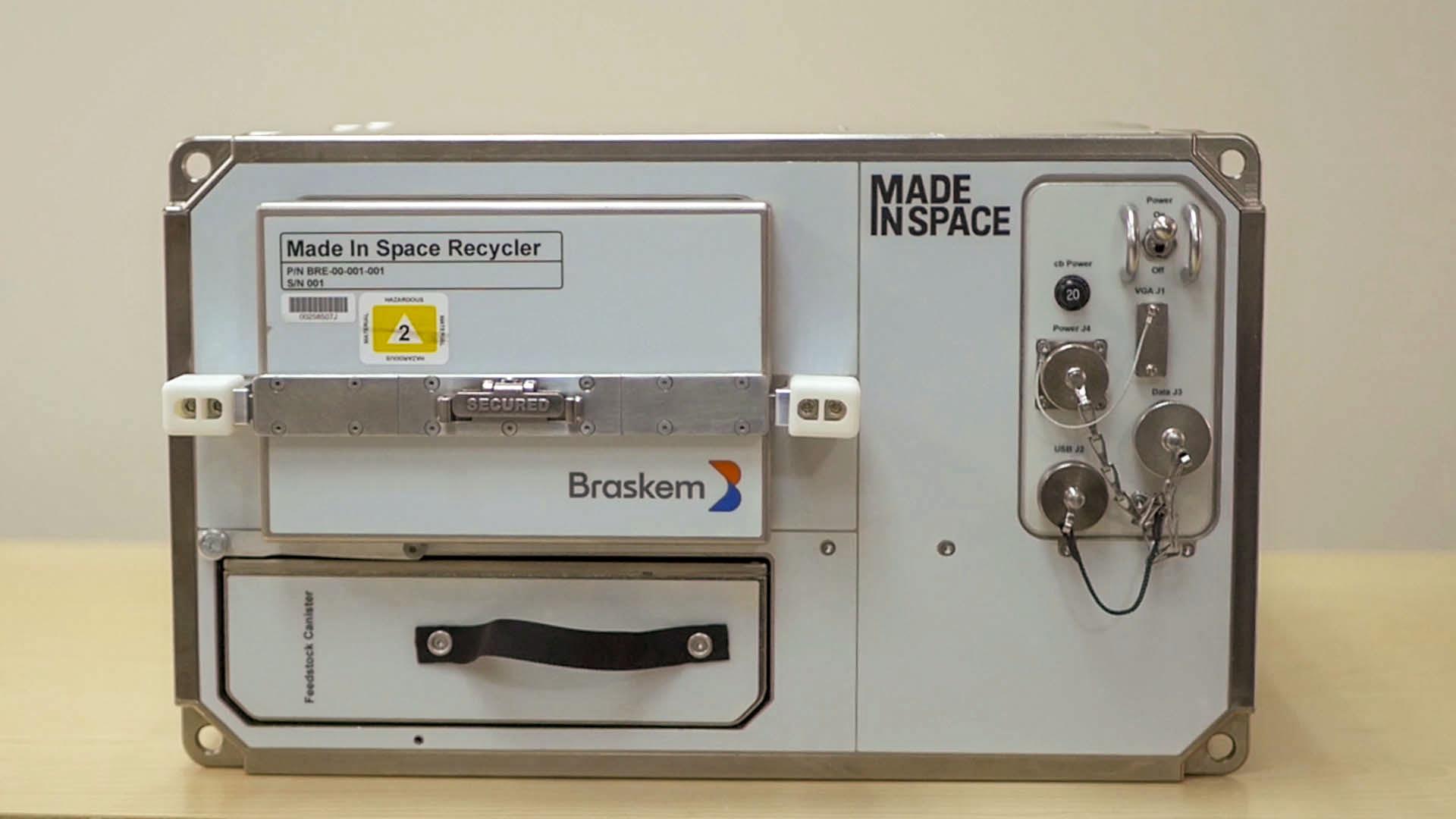 With deep space exploration moving forward, NASA is using the International Space Station (ISS) to conduct cutting edge research and technological developments to help prepare astronauts as they take the next steps in human space exploration as part of the Artemis program and the broader Moon to Mars exploration approach. The ISS currently is the only place for conducting long-duration research to test how living in microgravity can affect humans. A lot of excellent research has been going on in the orbiting lab for a while now and according to NASA, it is a busy time for the six crew members stationed in orbit: last May they conducted 100 hours of research, setting records for science utilization. Soon, more payloads with research and technology will be traveling 408 kilometers away from Earth and docking at the ISS.
With deep space exploration moving forward, NASA is using the International Space Station (ISS) to conduct cutting edge research and technological developments to help prepare astronauts as they take the next steps in human space exploration as part of the Artemis program and the broader Moon to Mars exploration approach. The ISS currently is the only place for conducting long-duration research to test how living in microgravity can affect humans. A lot of excellent research has been going on in the orbiting lab for a while now and according to NASA, it is a busy time for the six crew members stationed in orbit: last May they conducted 100 hours of research, setting records for science utilization. Soon, more payloads with research and technology will be traveling 408 kilometers away from Earth and docking at the ISS.
 The Northrop Grumman Cygnus spacecraft (NG-12) is scheduled for launch in just two weeks and yesterday, scientists and NASA researchers went live to explain some of the experiments that will be hitching a ride to the ISS. The investigations making the trip range from research into human control of robotics in space to testing radiation protection equipment for astronauts. But one project caught our attention: the Made In Space Recycler (MIS Recycler), which will be delivered to the ISS to test systems for reprocessing plastic into 3D printing filament to create new items in microgravity.
The Northrop Grumman Cygnus spacecraft (NG-12) is scheduled for launch in just two weeks and yesterday, scientists and NASA researchers went live to explain some of the experiments that will be hitching a ride to the ISS. The investigations making the trip range from research into human control of robotics in space to testing radiation protection equipment for astronauts. But one project caught our attention: the Made In Space Recycler (MIS Recycler), which will be delivered to the ISS to test systems for reprocessing plastic into 3D printing filament to create new items in microgravity.
The MIS Recycler does pretty much what its name suggests – it recycles polymers into filament for use in the Additive Manufacturing Facility (AMF), a 3D printer that has been operating on the orbiting laboratory since 2016. The investigation will look at which materials process most effectively into 3D printing filament and which ones can be reprocessed many times without degrading. Researchers plan to analyze samples printed in space after they return to Earth and compare them to samples printed similarly on the ground.
Made In Space has been building bespoke space manufacturing technology since 2010 and is a pioneer in microgravity additive manufacturing. Yesterday, Michael Snyder, Chief Engineer and the founder of MIS, delved into some of the most interesting details behind the device, proving once again that the innovative company is moving forward sustainably into orbit.
“We are very excited about this payload because we are adding to our commercial facilities on the ISS to further enhance our in orbit capability,” stated Snyder. “The Recycler and the AMF have a sibling relationship, considering that the parts we can produce in the AMF can be put right into the recycler when they are done being used in space, so that they can be converted into filament. And that filament can in turn be loaded back into the AMF and produce new parts.”
The Recycler is a facility designed to convert polymer waste and 3D printed objects back into a feedstock that could be loaded into the commercial printer in orbit. It’s just like building a circular economy in space, something that could be very useful for deep space exploration when going to Mars.
Snyder emphasized that the aim is “to improve the sustainability of manufacturing capabilities on the ISS, so that way we don’t have to continually launch polymer in the form of filament to our AMF facility, and instead, we can keep recycling and reusing the material for different experiments.”
The experiment actually involves processing plastic that MIS is sending up to the station as waste, as well as using objects previously fabricated by the 3D printer in orbit and turning them back into filament to be reused. According to Snyder, the process starts in a little loading bin, then moves through a particle conforming device that shreds the material and grounds it down to a particular size so that it can be placed in an extruder. After that, the material is pooled into filament that will go into a cartridge, which is finally taken out of the recycler and placed in the AMF to use for new printing projects. Once the test run of the MIS Recycler is over, the recycled filament will make its way back to Earth where MIS will test it, as well as some of the printed parts that were produced in space with it. The Recycler will complete the plastic sustainability lifecycle on-orbit.
“We are trying to validate hardware that we will reuse later. This is significant because of the implications the Recycler has for future exploration missions, as well as the commercialization of Low Earth Orbit (LEO). One of our company’s philosophies is “built on the past”, so in this payload we decided to resend parts of our very first payload for testing. This is all part of our sustainable local manufacturing resources, whereby combining the recycler with the AMF will be essential to exploration missions to the Moon and Mars.”
This will be the fourth facility launched by MIS; previous ones include the AMF and the Optical Fiber Production in Microgravity Experiment (OFPIM). Snyder recalled that this all started a long time ago as a Phase I SBIR through NASA, which means the company is now coming full circle by commercializing the technology.
Resupply missions from US companies ensure NASA’s capability to deliver critical science research to the space station and significantly increase its ability to conduct new investigations in the only laboratory in space. This is the first mission under Northrop’s Commercial Resupply Services contract with NASA; however, these are just a few of the hundreds of investigations currently happening aboard the orbiting laboratory.
NASA claims that today, more than 2,900 investigations have been conducted by nearly 4,000 researchers representing 108 countries around the world. These investigations have resulted in over 1,700 scientific papers in advance technology readiness and areas critical for Artemis that have also contributed to improving life here on Earth. This particular launch will carry 7,900 pounds of science payloads and will be supporting at least 35 investigations.
Bryan Dansberry, an assistant program scientist for NASA’s ISS Program Science Office, said yesterday that there have been “almost twenty years of continuous human presence aboard the ISS, a station that started out as an orbiting outpost and evolved into a robust and surprisingly versatile laboratory.”
“Unlike most labs on Earth, which typically specialize in one field of research, the orbiting laboratory supports endeavors across a wide range of disciplines, from space observational science to biotechnology. Today there are 17 commercially operating facilities actively being used to enable this variety of research, and the MIS Recycler further enhances and moves us towards a very important capability being able to do additive manufacturing in space to support things astronauts might need during long-duration missions and this capability will become very important as we move into a more mature commercial economy in LEO as well,” suggested Dansberry.
This investigation shows the value of closing the loop between the printer and recycling materials that are used by the printer. This has implications for space conservation and deep space missions.
“The ISS National Lab, one of our chief missions is to foster a very robust portfolio of science, and we are seeing an increase in interest in the use of LEO to address research and technology developments to benefit us on Earth,” added Michael Roberts, Chief scientist for the ISS US National Lab. “Its been a record setting calendar year, and with this launch we have even more opportunities to build on the success of the previous year. All of this taken together demonstrates a tremendous demand and leverages the unique aspects of the orbital laboratory.”
Cygnus lifts off on the Antares rocket from NASA’s Wallops Flight Facility on Wallops Island, Virginia. Be sure to tune in on November 2 to watch the launch live.
[Images: NASA and Made In Space]Subscribe to Our Email Newsletter
Stay up-to-date on all the latest news from the 3D printing industry and receive information and offers from third party vendors.
You May Also Like
3D Printing News Briefs, April 13, 2024: Robotics, Orthotics, & Hypersonics
In 3D Printing News Briefs today, we’re focusing first on robotics, as Carnegie Mellon University’s new Robotics Innovation Center will house several community outreach programs, and Ugogo3D is now working...
Rail Giant Alstom Saves $15M with 3D Printing Automation Software 3D Spark
3D Spark has entered into a three-year deal with the rail giant Alstom. Alstom, a transport behemoth with annual revenues of $16 billion, specializes in the manufacture of trains, trams,...
Meltio Expands Global Reach with New Partnerships in the Americas and Europe
Spanish 3D printing manufacturer Meltio has expanded its sales network across the globe. With the addition of three new partners in the United States, Brazil, Argentina, and Italy, Meltio aims...
3D Printing Webinar and Event Roundup: April 7, 2024
Webinars and events in the 3D printing industry are picking back up this week! Sea-Air-Space is coming to Maryland, and SAE International is sponsoring a 3D Systems webinar about 3D...



































